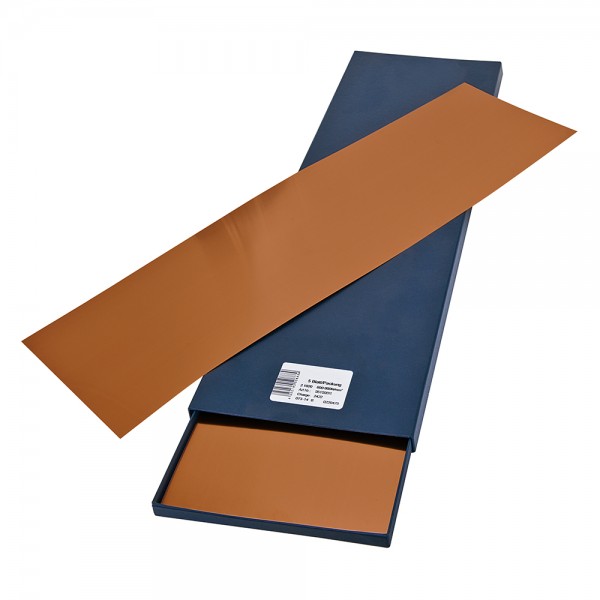
- Order number: 70.32.0005.500.150
- Note: 5 pieces / PU
- Info: Special discount on larger quantities!
Bronze Foil - Bronze Sheet
Bronze is an alloy of copper (Cu) and tin (Sn). A distinction is made between wrought and cast alloys depending on the processing.
Typical application examples are connectors, contact pins, as well as general stamped and bent parts and springs, where good electrical conductivity is necessary
In contrast to brass, bronze can also be used in vacuum technology.
Properties material CW452K - 2.1020
The bronze alloy CW452K - also called two-alloy - is the most frequently used type of bronze with a tin content of approx. 6%.
The alloy CW452K is characterized by a particularly favorable combination of cold formability, strength and hardness.
In addition, bronze is very corrosion and wear-resistant as well as seawater-resistant and has good tinnability.
Technical information
Bronze cannot be magnetized and therefore cannot be clamped on grinding machines. Bronze plates can be laser cut well and are very easy to etch.
CuSn6 is easy to weld with all processes. However, the heat input at the weld seam can lead to a structural change that reduces the strength. Bronze is very suitable for soft soldering.
The high strength of the bronze plates or the material is achieved by cold forming during rolling. Therefore, the direction of rolling has a great influence on bending.
Other applications / properties:
| Material: | Bronze |
| Thickness: | 0,05 mm |
| Length: | 500 mm |
| Width: | 150 mm |
| EN Material - Name: | CW452K |
| DIN Material - Name: | CuSn6 |
| Alloy: | CuSn6 |
| Material - Number: | 2.1020 |
| Surface: | cold-rolled |
| Magnetisable: | no |
Alles in Ordnung
Gerne wieder
sehr schnell, kompetent und freundlich!
Absolut empfehlenswert











